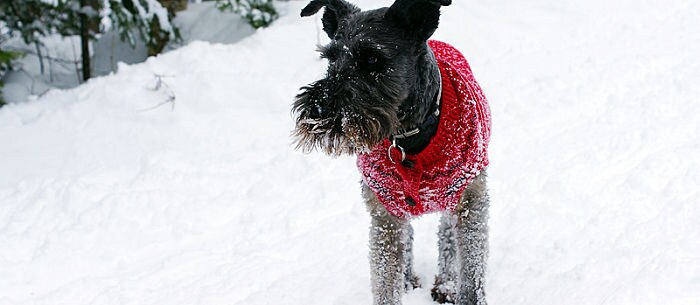Many dog owners are used to the sight of loose hairs scattered around the house and clumps collected in the corners of rooms — particularly if it’s shedding season and your fluffy dog has a lot of hair to lose. However, when hair loss in dogs leaves your pup with bald spots, it might be time to call the vet.
Here are the answers to six key questions about hair loss in dogs:
- What’s the Difference Between Hair Loss and Shedding?
For many dogs, shedding is a normal process which can happen all year round: dead hair falls out for new growth to replace it. Most notably this takes place in the summer when dogs shed their winter coats for the warmer weather. On the other hand, hair loss, or alopecia, is not a normal: the hairs fall out at a higher rate than they are replaced, and the result is hairless areas.
It should be relatively easy to tell the difference between shedding and more serious hair loss. Double-coated dogs — breeds with a longer, tougher outer coat and a soft, dense undercoat, such as Pomeranians and Siberian huskies — may lose hair in clumps and patches, but no baldness should ever be seen.
- What Are the Reasons for Hair Loss In Dogs?
There are numerous reasons for hair loss in dogs, such as allergies, a skin infection, hormone imbalances, fleas, mange and poor nutrition. Excessive grooming by your dog from allergies or anxiety, reactions to topical medications, tumours and cancer can also cause alopecia.
Remember that you don’t need to worry about hairlessness on dogs which have been bred that way — such as the Xoloitzcuintli, the American Hairless Terrier, the Chinese Crested and the Peruvian Inca Orchid!
- How Should You Treat Dog Hair Loss?
Alopecia is usually a symptom of another condition, meaning that there is no one treatment for hair loss in dogs. Once you take your dog to the vets, they should be able to carry out some diagnostic tests to determine the cause. They will then prescribe one of a number of treatments: from special shampoo, to flea treatment to other medication — it depends on what condition your dog has.
- When Do You Take Your Dog to the Vet?
Bald spots of any type are not a normal part of a dog’s coat. The hair loss you note could be one small bald patch, several bald spots or many empty areas across your pet’s body. Pet owners should see their vet at the first sign of bald spots. Other signs that indicate your pooch needs to visit the vet are a lacklustre coat, thinning hair or a skin irritation.
- What Will Your Vet Do?
Your vet should give your dog a full physical exam. They will evaluate your dog’s skin and hair and check for parasites. Your vet should also check for signs of infection and may do some laboratory testing to make sure your dog’s endocrine system is working as it should.
- How Can You Help Your Dog?
If you see hair loss, consider giving your dog a jumper to wear in the winter. You’ll want to keep them out of the direct summer sun for too long as well, because the hairless spots could become sunburnt. Talk with your dog sitter about the hair loss. Not only is it always a good idea to have open communication, but the dog sitter can keep an eye out for strange reactions to treatments or recurring bald spots.
